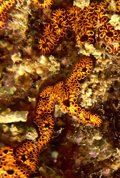ALICANTE, June 27 () –
The professor of Zoology of the Department of Marine Sciences and Applied Biology of the University of Alicante (UA) Alfonso Ramos has been part of the multidisciplinary scientific team that has analyzed, based on an inventory of exotic species registered in Spanish marine waters since 1800 until the end of 2021, the main routes of introduction of 574 species of this type.
This project has been led by the Spanish Institute of Oceanography (IEO, CSIC), with the collaboration of the Center for Advanced Studies of Blanes (CEAB-CSIC) and other universities such as Malaga and the Autonomous University of Madrid, as indicated by the UA it’s a statement.
In this study, data is collected from various sources such as scientific publications, monitoring programs and citizen science initiatives, among others. The work, recently published in the journal ‘Diversity’, indicates that of the 574 identified species, 35 percent have been introduced in the Western Mediterranean, 34% in the Bay of Biscay and the Iberian coast, and 31% in the Macaronesian region.
In general, alien species have increased their presence on the Spanish coasts over the last 20 years, among which invertebrates abound above primary producers (such as macroalgae and microalgae), vertebrates, and pathogens.
The researcher at the Oceanographic Center of the Balearic Islands and first author of the study, Lydia Png, has valued the close collaboration with national and international experts, which she considers to have been “essential to validate the list of species and, in this way, establish the Updated basic list of alien and invasive species in the marine waters of Spain”.
For his part, Ramos specified that, in the case of the Alicante coast, in recent years there has been an increase in exotic species of Lessepsian origin, in honor of the engineer Ferdinan Lesseps and builder of the Suez Canal, from the Red Sea and that have crossed said channel and reached the Western Mediterranean.
Of the set of registered alien species, more than 50% are established on the Spanish coasts and approximately 10% are invasive, especially in the Western Mediterranean. Maritime transport has been considered the “main route” for the introduction of alien species -either in ballast waters, as encrusting organisms in the hulls, or associated with other types of media- as it is the cause of 77% of the species inventoried in the three regions.
The second main route of introduction is related to aquaculture activities, such as the contamination of nursery material or parasites in animals, which accounts for more than 10% of the total species registered, especially in the Bay of Biscay and the Iberian coast. .
The data obtained confirm that the introduction of exotic species is a multifaceted process that involves several factors, such as the region and the available route of introduction, and even environmental changes over time.














